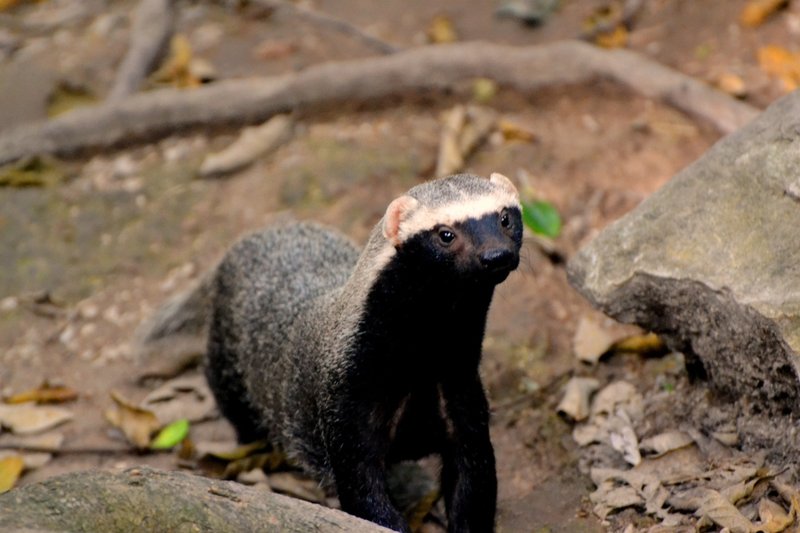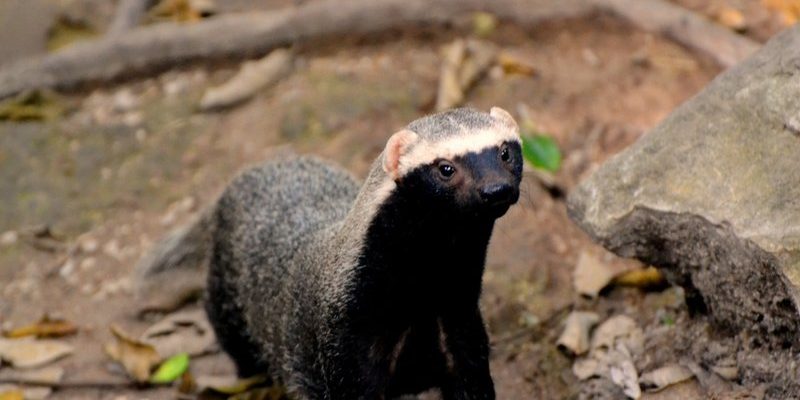
Have you ever heard of a grison? These fascinating creatures might not be household names like lions or elephants, but they have some remarkable traits worth exploring. Imagine a furry animal that’s a blend of a weasel and a small dog, darting through the underbrush with the agility of a gymnast. Grisons belong to the family of mustelids, which includes ferrets, otters, and badgers. Their unique looks and behaviors make them captivating to anyone interested in wildlife.
Grisons are primarily found in Central and South America, thriving in various habitats from savannas to rainforests. Known for their clever hunting tactics and social behaviors, these animals provide a peek into the complexities of life in the wild. In this article, we’ll dive deep into the world of grisons, exploring everything from their physical characteristics and diet to their social dynamics and conservation status.
Physical Characteristics
Grisons have a distinct appearance that sets them apart from other small carnivores. Typically, they have elongated bodies, short legs, and flat heads, which make them look slightly more like weasels or ferrets. Their fur is usually a mix of grayish or brownish colors, often with a paler underbelly. You might notice white markings on their faces and paws, adding to their charm.
In terms of size, adult grisons can measure between 18 to 26 inches in length, including a bushy tail that can take up a significant portion of their body length. They weigh between 5 to 12 pounds, making them sizeable compared to other mustelids. Their sharp claws are perfect for digging and climbing, enabling them to escape predators and hunt for food in diverse terrains.
One of the most fascinating aspects of their physical traits is their keen sense of smell and sharp eyesight, adapted for spotting prey both day and night. Their strong jaws and sharp teeth are impressive tools for crunching through small animals and insects, which dominate their diet.
Habitat and Distribution
Grisons are native to Central and South America, where they typically favor environments with plenty of cover and open areas for hunting. You’ll find them in a variety of habitats, including grasslands, forests, and scrublands. These environments provide essential resources like food, shelter, and space to roam.
They adapt well to different climates, from the humid jungles to more arid regions. This flexibility is crucial for survival, as they often need to move between various terrains while searching for food or escaping threats. Grisons are primarily terrestrial, but they are also skilled climbers, which means you might spot them in trees or rocky outcrops as they survey their surroundings.
Interestingly, grisons often dig burrows or use abandoned ones from other animals. These dens serve as places to rest and raise their young, providing a safe haven from larger predators. This behavior shows their resourcefulness in taking advantage of their environment.
Diet and Feeding Habits
When it comes to dining, grisons are true carnivores. Their diet mainly consists of small mammals, birds, reptiles, and insects. With their agile bodies and hunting skills, they can efficiently catch fast-moving prey. Think of them as the ultimate small-game hunters of the animal kingdom.
A typical day for a grison involves foraging during dawn or dusk when they are most active. They have a remarkable ability to hunt alone or in pairs, using teamwork to corner and capture their prey. You might find them rummaging through leaf litter or stalking quietly through the underbrush, showcasing their stealthy approach.
What’s fascinating is that grisons can also consume fruits and vegetables on occasion, demonstrating their adaptability when food is scarce. This varied diet allows them to thrive in different conditions, making them resilient hunters across their native range.
Social Structure and Behavior
Grisons are social animals, usually found in small family groups. They often form tight-knit communities, which can include a breeding pair and their offspring. This social structure enhances their ability to hunt and protect themselves from predators. You might think of them as the extended family of the wild, looking out for one another.
Within these groups, they display fascinating behaviors. Grisons communicate through a variety of vocalizations, including barks and growls, to alert each other to danger or to coordinate during a hunt. Their playful interactions, especially when playing tag or wrestling, highlight their social dynamics and help strengthen connections within the group.
Interestingly, while they work together, grisons can also exhibit dominance behaviors. They may engage in playful sparring to establish hierarchies, ensuring that the most skilled hunters get first dibs during mealtimes. This balance of cooperation and competitiveness is crucial for their survival.
Reproduction and Lifespan
Grisons have a unique reproductive cycle. The mating season typically occurs in late winter, with a gestation period of about 60 days. After this period, female grisons typically give birth to 2 to 4 kits. These young are born blind and helpless, relying entirely on their mother for survival during their early weeks.
As the kits grow, they start to open their eyes and venture out of the den. By six weeks, they begin to explore their surroundings, learning critical survival skills from their parents. This period is essential, as it prepares them for the challenges they’ll face once they become independent.
In terms of lifespan, grisons can live up to 10 years in the wild. Unfortunately, like many wild animals, their lives can be cut short by predation, habitat loss, or human encroachment. Conservationists are working hard to ensure these intriguing creatures can thrive in their natural habitats.
Conservation Status
Grisons are currently listed as Least Concern by the IUCN Red List, meaning they are not immediately endangered. However, their populations face threats from habitat destruction and human activities. Deforestation, agriculture, and urbanization are changing their natural environments, leading to decreased food sources and more encounters with humans.
Conservation efforts focus on protecting their habitats and managing human-wildlife conflicts. Preserving the ecosystems where grisons thrive is crucial for their continued existence. Engaging local communities in conservation practices can create a balance that helps both wildlife and people coexist successfully.
Moreover, raising awareness about the importance of grisons and their role in the ecosystem is vital. As we learn more about these creatures, we can better advocate for their protection and promote a sustainable future for wildlife in Central and South America.
| Fact | Details |
| Scientific Name | Galictis vittata |
| Size | 18-26 inches long |
| Weight | 5-12 pounds |
| Habitat | Grasslands, forests, scrublands |
| Diet | Small mammals, birds, insects |
| Lifespan | Up to 10 years in the wild |
| Conservation Status | Least Concern |
FAQ
What is a grison’s primary diet?
Grisons are primarily carnivorous, hunting small mammals, birds, reptiles, and insects. They have adapted to consume different types of prey based on what is available, demonstrating their flexibility in diet. While they predominantly eat meat, they occasionally nibble on fruits and vegetables when necessary.
Are grisons social animals?
Yes, grisons are known to be social creatures. They often live in small family groups, which can enhance their hunting success and provide protection against predators. Their social interactions include vocalizations and playful behaviors that strengthen bonds within the group.
How do grisons communicate?
Grisons communicate through vocalizations such as barks, growls, and hisses. These sounds help alert group members to danger or coordinate during hunts. Their range of sounds indicates different emotions or messages, showcasing their social intricacies.
What are the main threats to grison populations?
Habitat loss due to deforestation, agriculture, and urban development poses significant threats to grison populations. As their natural habitats shrink, they face challenges finding food and shelter. Additionally, human-wildlife conflict can lead to direct harm to these animals.
How long do grisons live?
In the wild, grisons can live for up to 10 years. Their lifespan can be affected by various factors, including predation, environmental conditions, and human activities that may disrupt their natural habitats.
Where can I find grisons in the wild?
Grisons are native to Central and South America. They thrive in various habitats, including grasslands, forests, and scrublands. If you’re exploring these regions, keep an eye out for their elusive presence among the underbrush.
What is the conservation status of grisons?
Grisons are currently classified as Least Concern by the IUCN Red List. However, they still face threats that could impact their populations. Ongoing conservation efforts aim to protect their habitats and mitigate human impacts on their survival.
Do grisons have any natural predators?
Yes, grisons can fall prey to larger carnivores, birds of prey, and even snakes. Their size makes them vulnerable to various predators, particularly when they are young. Being social animals, they often rely on group dynamics to warn each other of potential threats.
Can grisons be kept as pets?
While some people may consider keeping grisons as pets, it’s generally not advisable. They have specific dietary and environmental needs that can be challenging to meet in a domestic setting. Additionally, they are wild animals with instinctual behaviors that may not translate well to a home environment.
What role do grisons play in their ecosystem?
Grisons are important predators in their ecosystems. By controlling the populations of small mammals and insects, they contribute to the balance of their habitats. Their presence helps maintain a healthy ecosystem, making their conservation crucial for environmental health.
How do grisons care for their young?
Female grisons take on the primary responsibility for caring for their kits. After giving birth, the mother provides food and protection, teaching them essential skills as they grow. The kits start to explore their surroundings and learn to hunt under her guidance, preparing them for independence.
What makes grisons unique compared to other mustelids?
Grisons have a unique blend of physical traits and social behaviors that set them apart from other mustelids. Their size, coloration, and community-oriented lifestyle contribute to their distinct identity. Unlike many other mustelids that are often more solitary, grisons thrive in social groups.
How do grisons adapt to their environments?
Grisons adapt to their environments by modifying their diets, using available shelters, and displaying flexible social structures. Their ability to hunt alone or in pairs shows their resourcefulness, enabling them to thrive in various landscapes across Central and South America.

